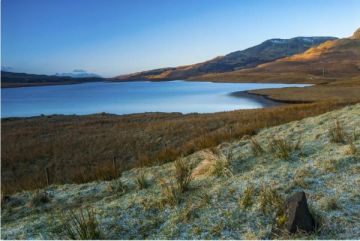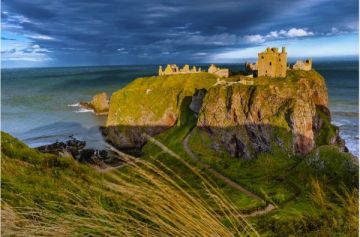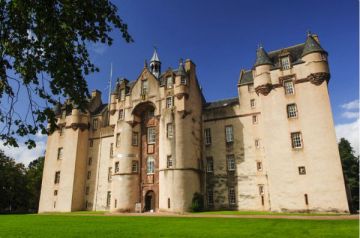Around 500 BCE bronze began to be replaced by iron as the material of choice for making tools and weapons. The advantages of iron were readily apparent; it was harder, longer-lasting, and could take and hold a much sharper edge. New waves of settlers from Europe began to arrive, bringing with them their iron technology, and pushing back the earlier Bronze Age peoples.
Indeed, many of our best finds of bronze implements and ornaments date from the 6th and 7th centuries BCE, when people buried hoards of their possessions when faced with the waves of invading Iron age people from Europe.
Some Bronze age people built settlements and defensive fortresses of timber intended to stave off invasion from the newcomers. Some of these wooden fortresses were burned by the invaders, and the heat was so intense that the underlying stones fused together. These forts were called 'vitrified' forts.
The Celts
Loosely synonymous with the Iron Age was a fresh wave of settlers from Europe, known to us as the Celts. Quite where the Celts originated is a matter of endless debate among historians, but we do know that the first wave of emigration to Scotland took place around 900 BCE. The Celtic language had two branches, called P-Celtic and Q-Celtic. The Scottish Gaelic language developed from Q-Celtic, as did the version of Gaelic spoken in Ireland and the Isle of Man. Indeed, the Celts probably settled in Ireland first, and came to Scotland from there.
The Celts were known to paint their bodies with bright colours - not necessarily just when going into battle, though that is the most famous manifestation of the Celtic fashion. When the Romans later invaded Scotland they called the inhabitants they fought 'Picti', or 'painted'. From this we get the later term Pict.
Celtic life was based on a tribal unit headed by chiefs. The tribe might also be an extended family, or clan. They also developed specialised classes of people with specific skills, such as druids, farmers, tradesmen. Their leaders were drawn from an aristocracy made up of the best warriors in the tribe. They introduced slavery to Britain, as well as a more positive contribution to Scottish culture; the ancestor of the tartan, a form of cloak.
There were no kings of the Celts as we understand the term. Rather, each group was loyal to their local chief, or leader.


